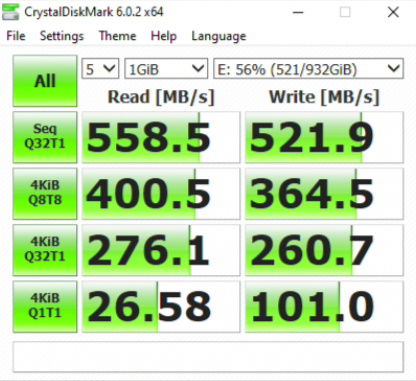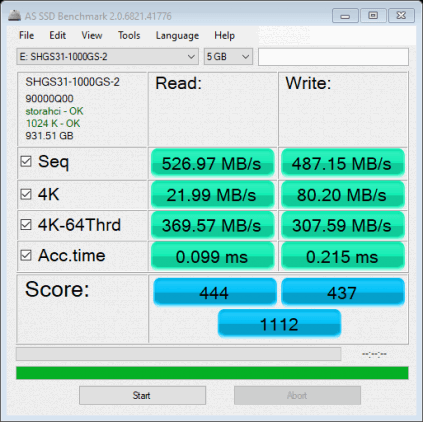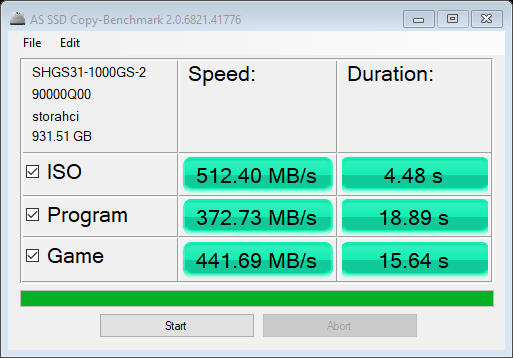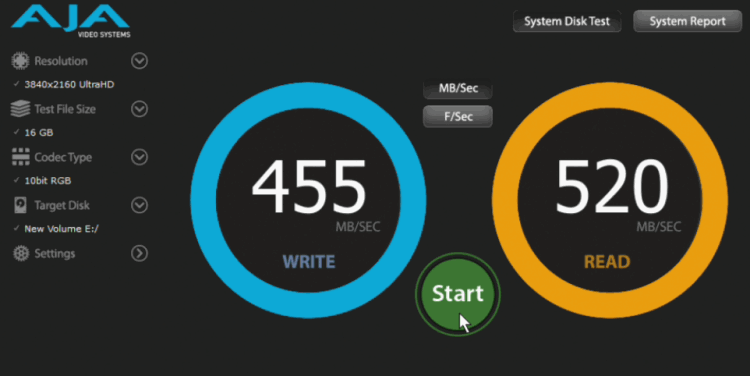SK hynix is known for providing components for many manufacturers for their products, the company isn’t known for its hard drives. However, that all changed recently as the company has released a new SSD that’s catered towards gamers. The SK hynix Gold S31, as it’s called, is marketed towards PC gamers. With its advertised high read and write speed. If it lives up to expectations the lower price tag could make it an attractive alternative to some of the SSD market leaders.
Design and features
The SK hynix Gold S31 is a 2.5-inch thick, SATA 6GBps SSD. The outside features an aluminum chassis, with the front featuring the SK hynix brand and a gold nugget.
| Column A | Column B |
|---|---|
| Form Factor: | 2.5-inch Internal Drive |
| Bus: | SATA III (6GBps) |
| Storage Memory: | 3D NAND |
| Controller: | Custom SK Hynix Controller |
| Sequential Read: | up to 560 MB/s |
| Sequential Write: | up to 525 MB/s |
| Warranty: | 5 years |
| Price: | $118.99 at Amazon |
While the outside is no-frills, it’s what’s inside that matters. While other manufacturers depend on various companies to provide parts for their SSD units, SK hynix has an advantage. As they produce everything in this SSD, from the 72-layer 3D NAND, DRAM and 4th generation “Quartz” Controller (SATA), which has been designed and produced by SK hynix. Which means that they’re able to squeeze a little more performance out of the aged technology. Though if you’re looking for an NVMe drive, SK hynix will also offer those later in 2020.
The unit we were sent for review is a 1TB drive, while the drive is also offered in 250GB and 500GB variants. They also include a five-year warranty. According to the marketing materials that accompanied the drive, the 1TB unit supposedly reaches up to 560 MB/s reads and 525 MB/s. For now, this drive is only available via Amazon and retails for $118.99.
Testing the unit
We’ve paired the drive with a slightly older PC setup, but one that’s more than capable of putting the drive through its paces.
Keith's Test System Specs
| Column A | Column B |
|---|---|
| Motherboard: | Gigabyte GA-AB350N-Gaming WIFI (buy from Amazon) |
| Processor: | AMD Ryzen 1800x (buy from Amazon) |
| RAM: | G.SKILL Ripjaws V Series 16GB (buy from Amazon) |
| Power Supply: | Corsair RM 750 watt |
| OS: | Windows 10 Pro (buy from Amazon) |
| Storage: | Samsung 860 Pro 500GB, SK hynix Gold S31 1TB |
We’ve filled the drive to 56%, as testing an empty drive doesn’t give provide real-world examples. Most people are using a hard drive with data sitting on it, so why not provide a testing environment that mirrors what the average user would experience. We look at the sequential and 4K random speeds during testing. It should be noted that the higher the 4K results, the better the drive. Yet, 4K random results are typically lower due to the size of the blocks of data (4K) and random read/write. All tests are bypassing the on-board cache, as it would skewer the results.
First up is CrystalDiskMark 6.0.2, which is used to test measure the performance of SSDs, which excel at sequential reads and writes. By writing to the file system, CrystalDiskMark can provide an output of just what sort of performance you can expect from your drive. While it can be argued that this tool isn’t recommended for testing SSDs, I find it’s a worthwhile tool.
Here we can see that the Gold S31 was able to hit 558 MB/s reads and 521 MB/s writes for sequential. Which puts the drive in the same ballpark as Samsung’s 860 Pro 1TB, 860 EVO 1TB, and 860 QVO 1TB SSDs.
Moving on to AS SSD Benchmark, we can see that while the numbers are a bit lower compared to CrystalDiskMark, they’re consistent with what we’ve seen with the Samsung 860 line-up. We’re seeing 526 MB/s read and 487 MB/s write speeds, while 4K read and write is observed at 21 MB/s and 80 MB/s. Access time was also expressive at 0.99 ms read, while the write speed was a bit lower than expected. Despite multiple attempts to see what could be causing the higher writes, including removing all content from the drive, the results were still the same.
Using the AS SSD Benchmark’s copy test, we also see that the drive was able to read and write various amounts of dummy data to the drive in a respectable amount of time. This test imitates real-world scenarios of copying an ISO, installing a game and program to the drive at random sizes.
The last test we put the drive through AJA System Test. A relatively newer testing tool, this measures the reads and writes of media formats. For example, you can configure the tool to create a media file with various resolutions and test the creation and read speeds. For this test, we created a 3840×2160 UltraHD (4K) 16GB file with 10-bit RGB, while disabling the onboard cache of the drive. The reason for the large file is to imitate a lossless file, which can be higher than 1080p (compressed) files. As you can see the results for this file at 520 MB/s read, and 455 MB/s write.
Final Thoughts
So here we are, and I’m sure by now you’re wondering if the Gold S31 is worth the money. Well, that depends on your PC setup. If you’re still using a motherboard that doesn’t have access to an NVMe slot, then, by all means, the Gold S31 is worth it. While it didn’t meet the marketed averages since those are best-case figures and not actual real-world performance, the overall results are positive. As stated previoously, this drive is on par with Samsung’s respected 860 line-up and that’s saying something. Combined with its aggressive pricing, the Gold S31 is worth the purchase if you’re looking for a larger capacity SSD and SATA is your only recourse.
Review Disclosure Statement: SK hynix Gold S31 1TB was provided to us for review purposes. For more information on how we review video games and other media/technology, please go review our Review Guideline/Scoring Policy for more info.
Affiliate Link Disclosure: One or more of the links above contain affiliate links, which means at no additional cost to you, we may receive a commission should you click through and purchase the item.








